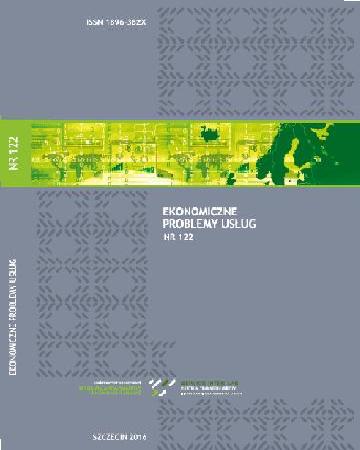
ISSN: 1896-382X
eISSN: 2353-2866
OAI
DOI: 10.18276/epu.2016.123-32



Issue archive /
nr 123 2016
Smartfon w edukacji i komunikacji młodzieży gimnazjalnej a zagrożenie fonoholizmem
(Smartphone in education and communication junior high school students – risk of addiction to mobile)
| Authors: |
Katarzyna
Warzecha
Uniwersytet Ekonomiczny w Katowicach |
| Keywords: | youth applications education smartphone dependence on mobile |
| Data publikacji całości: | 2016 |
| Page range: | 13 (345-357) |
Abstract
Pace of changes civilization and the rapid development of information and communication technology (especially the Internet and mobile devices), has an essential influence on the younger generation that often can not do without modern means of communication in everyday life. The article indicates the potential and threats posed by modern means of communication – smartphones.
Download file
Article file
Bibliography
| 1. | Behera K.S. (2013), E- and M-learning. A Comparative Study, „International Journal on New Trends in Education and Their Implications”, Vol. 4, July, Article 08. |
| 2. | Gmiterek G. (2013), Możliwości wykorzystania iPada w nauce i szkolnictwie wyższym, „E-Mentor”, nr 2. |
| 3. | Hojnacki L., Kowalczuk M., Kudlek K., Polak M., Szlagor P. (2013), Mobilna edukacja, M-learning, czyli (r)ewolucja w nauczaniu – poradnik dla edukatorów, Think Global sp. z o.o., Warszawa, http://www.bc.ore.edu.pl/dlibra/ |
| 4. | doccontent?id=718. |
| 5. | Izdebski P., Kotyśko M. (2013), Personality variables and depression as determinants of problematic use of mobile phones in Poland, „Polish J Appl Psychol” 11. |
| 6. | Jarczyńska. J., Orzechowska A. (2014), Siecioholizm i fonoholizm zagrożeniem współ-czesnej młodzieży, w: Uzależnienia behawioralne i zachowania problemowe młodzieży. Teoria. Diagnoza. Profilaktyka. Terapia, red. J. Jarczyńska, Wydawnictwo Uniwersyte-tu Kazimierza Wielkiego, Bydgoszcz. |
| 7. | Lu X., Watanabe J., Liu Q., Uji M., Shono M., Kitamura T. (2011), Internet and mobile phone text-messaging dependency: Factor structure and correlation with dysphoric mood among Japanese adults, „Comput Human Behav.” 27 (5). |
| 8. | Lubina E. (2007), M-learning w strukturze metodycznej e-learningu, Ce-mentor”, nr 5. |
| 9. | Lopez-Fernandez O., Honrubia-Serrano L., Freixa-Blanxart M., Gibson W. (2014), Prevalence of Problematic Mobile Phone Use in British Adolescents, „Cyberpsycholo-gy, Behavior, and Social Networking”, 17 (2). |
| 10. | Martinotti G., Villella C., Di Thiene D. et al. (2011), Problematic mobile phone use in adolescence: a cross-sectional study, „J Public Health”, 19 (6). |
| 11. | Pawłowska B., Potembska E. (2009), Właściwości psychometryczne Kwestionariusza do Badania Uzależnienia od Telefonu Komórkowego (KBUTK), „Bad. Schizofr.”, 10. |
| 12. | Pawłowska B., Potembska E. (2011), Objawy zagrożenia i uzależnienia od telefonu komórkowego mierzonego Kwestionariuszem do Badania Uzależnienia od Telefonu Komórkowego, autorstwa Potembskiej i Pawłowskiej, u młodzieży w wieku od 13 do 24 lat, „Curr. Probl. Psychiatry”, 12 (4). |
| 13. | Sánchez-Martinez M., Otero A. (2009), Factors associated with cell phone use in ado-lescents in the community of Madrid (Spain), „Cyberpsychol. Behavior”, 12 (2). |
| 14. | Warzecha K. (2015), Telefon komórkowy w komunikacji i edukacji śląskich studentów, w: Cyfryzacja i wirtualizacja gospodarki, red. M. Pluciński, Zeszyty Naukowe Uniwer-sytetu Szczecińskiego nr 852, Ekonomiczne Problemy Usług nr 117, Szczecin. |